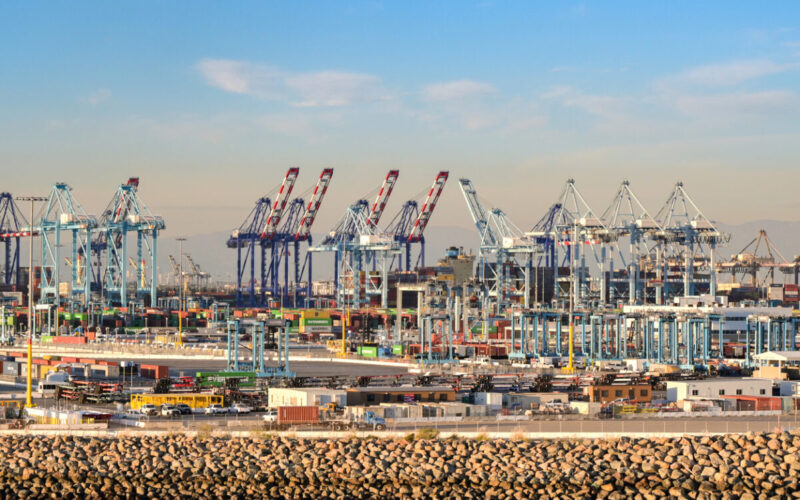The Port of Los Angeles will continue its investment for the next three years on clean trucks and supporting infrastructure to help transition the drayage fleet serving the port to zero-emission (ZE) models by 2035.
The Los Angeles Board of Harbor Commissioners unanimously approved the spending plan that will guide how the port allocates its Clean Truck Fund (CTF) revenues through June 2028.
Port funding comes from the CTF Rate. The rate was established to help operators afford ZE trucks, which are more expensive than conventional models, and build the charging and fuelling depots needed to power them.
The revenues come from cargo owners who pay $10 for every loaded TEU hauled through the port by conventional drayage trucks, most of which run on diesel. The rate for larger containers is $20.
Cargo owners who use ZE trucks are permanently exempt from the rate. Owners whose goods are hauled by certain trucks with lower nitrogen oxides emissions have a temporary exemption through 31 December 2027. The Port of Long Beach collects the same rate under its CTF Rate programme.
As of March 2025, the Port of Los Angeles has spent or allocated $93 million on deploying ZE trucks and building charging and fueling depots. The total includes funding for projects subject to final approval by the Harbor Commission and covers:
- Incentive vouchers for up to 350 ZE drayage trucks, with 103 trucks delivered and up to 247 more on order.
- An additional 22 ZE trucks through two licensed motor carriers were awarded funding in the port’s first Request for Proposal (RFP), with 10 trucks in service and 12 trucks ready to be deployed this quarter when in-house charging stations are operational.
- A regional project led by the South Coast Air Quality Management District that put 100 ZE trucks into drayage service at the San Pedro Bay ports.
- A regional infrastructure project funding eight public charging stations that provide 207 chargers for battery-electric trucks across Southern California.
- Another proposed public charging station is due to be located in Wilmington and is currently under environmental review.
READ: Port of Los Angeles posts strong April before tariff impact
Over the next three years, the port expects to collect about $120 million more in CTF revenues. The actual amount will depend on cargo throughput and the growing number of ZE trucks calling at the port.
Through mid-2028, the port will continue to prioritise spending CTF revenues on vouchers that make ZE trucks more affordable, charging and fueling infrastructure projects, and future RFPs that put more ZE trucks in port service and add more infrastructure.
The port will also prioritise investing in promising ZE truck technology and helping to support grant applications by others that accelerate the transition to ZE trucks. Likely grant partners include other government agencies, current Port tenants, and/or licensed motor carriers registered to call at the port.
“Our Clean Truck Program is essential to our larger efforts to eliminate pollution from all sources involved in our operations,” said Harbor Commission President Lucille Roybal-Allard.
READ: Port of Los Angeles sees strong Q1 amid tariff threat
“The Clean Truck Fund is a short-term strategy to maximise results,” said Port Executive Director Gene Seroka.
“This money puts more ZE trucks in Port service faster by lowering the cost of purchasing them while ensuring the charging and fueling infrastructure is there to keep them moving.”








